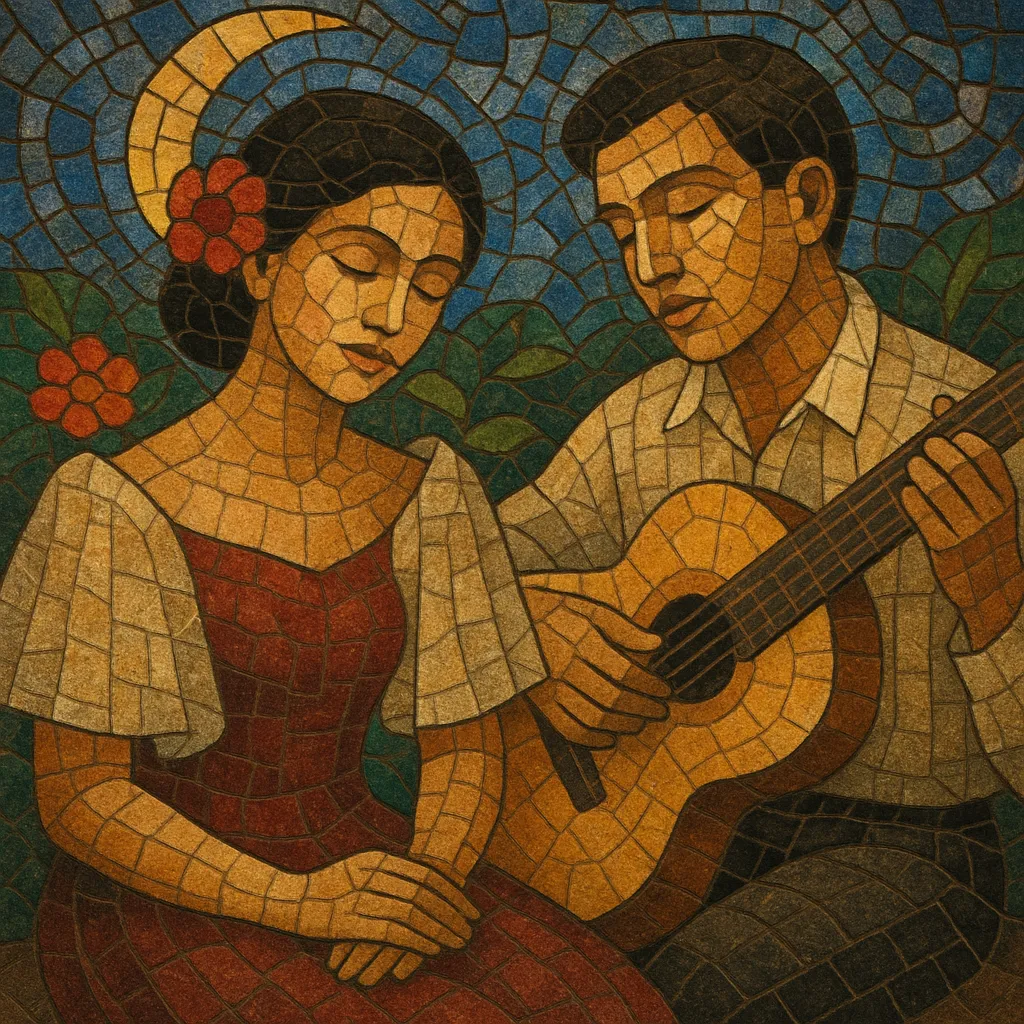Kundiman is a Filipino art-song tradition centered on love and devotion, typically sung in Tagalog with refined, lyrical melodies. It is most often set in a slow triple meter (commonly 3/4), employing expressive rubato and ornamentation.
Harmonically, kundiman pieces characteristically begin in a minor key and resolve to the parallel major in the refrain, mirroring a poetic journey from yearning to hope. While rooted in indigenous Filipino song and serenade practice, the genre absorbed European art-song and Romantic-era harmonic language during Spanish and early American colonial periods.
Beyond romantic themes, kundiman historically served as an allegory for patriotic love of the motherland, especially during the late 19th-century Philippine Revolution. Today it is performed by classical singers and traditional vocalists alike, remaining a cornerstone of Filipino musical identity.
Kundiman emerged in the Tagalog regions of the Philippines during the late Spanish colonial period. Though its sentimental tone and serenade context draw from local traditions, its formalization as an art song took shape under the influence of European art music. By the 1890s, kundiman texts frequently used the beloved as a metaphor for the motherland, with songs like the revolutionary-era “Jocelynang Baliwag” emblematic of patriotic sentiment.
Under American colonial rule, conservatory training proliferated. Composers such as Francisco Santiago and Nicanor Abelardo refined kundiman into a concert art-song form: strophic or modified-strophic structures, piano or guitar accompaniment, and Romantic harmony (often minor-to-parallel-major modulation). Their published works, recitals, and radio performances in the 1910s–1930s established a canonical style.
From the 1930s to the 1950s, kundiman permeated popular culture via radio, cinema, and salon concerts. Composers like Constancio de Guzman and Mike Velarde Jr. wrote enduring hits (“Maalaala Mo Kaya,” “Dahil Sa Iyo”) that blended classical kundiman traits with emerging popular idioms, bringing the genre to a wider audience.
While postwar popular music and OPM diversified Filipino soundscapes, kundiman remained a touchstone for classical singers (e.g., in recitals and cultural festivals) and for contemporary reinterpretations. Its melodic rhetoric, Tagalog poetics, and harmonic arcs continue to inform Filipino songwriting and performance practice across genres.


